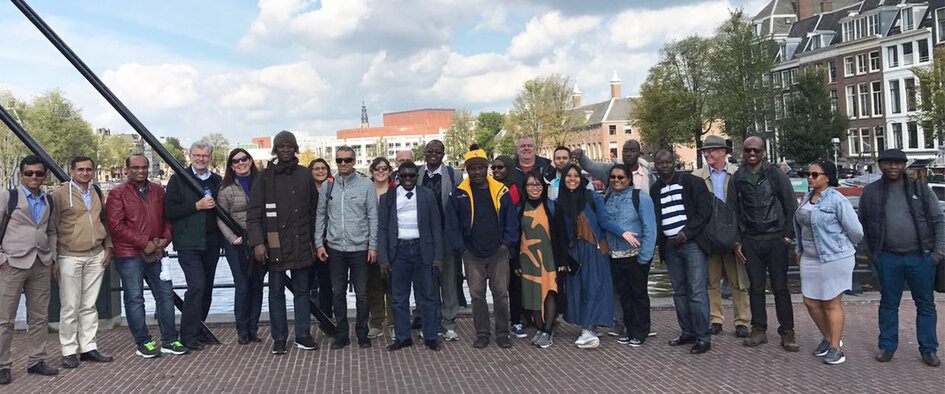After successfully graduating from Delft Road Safety Course, a cooperation between Delft University of Technology, SWOV Institute for Road Safety Research, Delft Post Graduate Education and Road Safety for All, Our monthly columnist Brian Kanaahe Mwebaze dares to explore what makes a good road good in Africa.

That’s right folks! With support from YOURS, FIA Foundation and Delft University, I finally graduated from the Delft Road Safety Course:-an annual Road Safety capacity building course for road safety professionals in low and middle income countries (LMICs).

I have pregnant post-course actions and like my favorite (retired) Wrestler Dwayne Johnson-The Rock would say, “If you smell what The Rock is cooking?”.
During the lifecycle of the said course that took place at Delft University in the Netherlands, there were several road safety delicacies to eat and reflect on which I managed to put in the refrigerator under this link “Midway reflections from @DelftRoadSafety Course 2017 #DRSC2017.
There’s a lot that was posted by over 25 participants under the hashtag #DRSC2017 on twitter so throw an eye over there. Perhaps, the most finger-licking experience came when we took an out of class session visiting local communities around Delft, learning about road designs and road user behavior that reminded me of how, back at home we define a good road.
You see, to a 95% confidence interval, our case definition of a good road is justified by 2 indicators, make a road with no potholes, make it wide to accommodate 2 way traffic on each side and we shall love you till River Nile dries! (it’s beginning to loose water volumes though).

Learning session at SWOV
Hold on a sec…humans and animals use roads, so shouldn’t we be defining the goodness of our roads by how safe we’re while using them? If a road could literally deliver zero crashes, zero deaths by protecting pedestrians, passengers and vehicle from skidding, turning multiple times off the road, wouldn’t this be the ideal road? The Dutch, Swedish (and most other countries) are defining their roads using these indicators.
As a result, they have consistently invested in sustainable road engineering, education and enforcement. They have strengthened preparedness and response before the crash, during the crash and post-crash so deep that if an ambulance arrives 10minutes after the crash:-someone could resign for not doing their job right.

A typical ‘Good’ road in Uganda
It’s envious to see a folk waiting for the green traffic light even when there’s no cop looking at them: people jogging on clearly marked pedestrian walkways (I did this for a fact), Cyclists doing their businesses in cyclist lanes, drivers negotiating double roundabouts and roads as old as 20 years without being re-furnished. Seeing all this is terrifying to acknowledge the fact that we’re always flirting with and cheating death (literally by the hair of our butts) while on our roads.
Is this all possible in our neighbors? Prof. Weigmann (Our course leader) would say “It requires sheer commitment from your governments and impatient generation of communities demanding for safer roads. You will have to adapt what you see here to your local contexts…and never forget the value of road safety data whatever you do”.
Stay safe!

